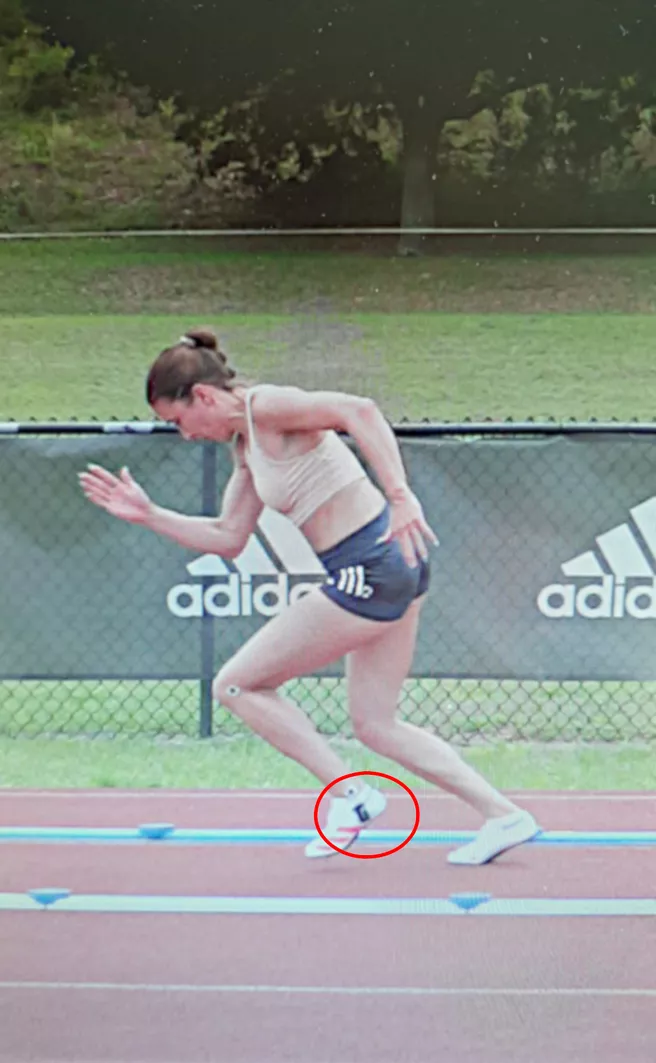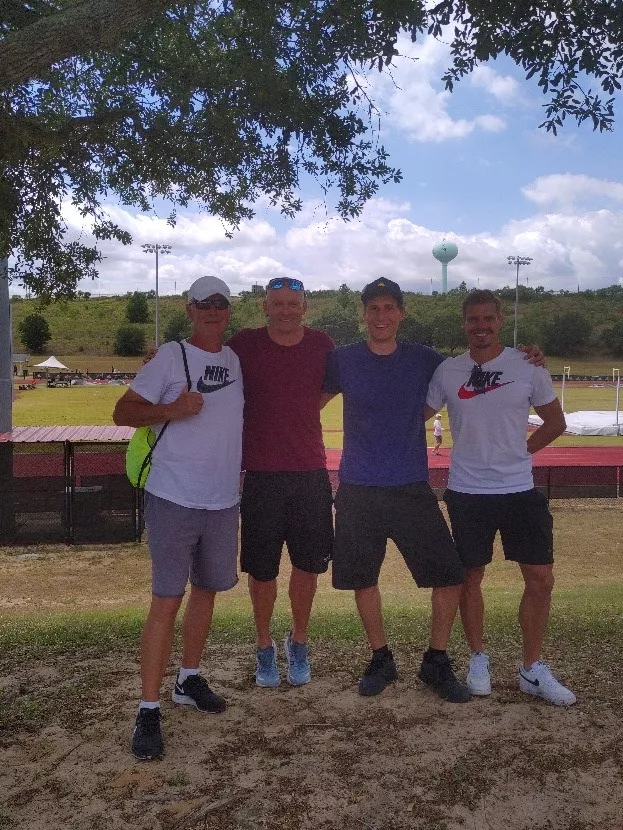The Chair of Performance Analysis and Sports Informatics has been working on the development of new methods for diagnostics in running for many years. Most recently, in the BISp-funded project "Sensor-based real-time running diagnostic in athletics", a method for determining ground contact times was developed (Blauberger et al., 2021). Patrick Blauberger summarizes the findings: "With this new, sensor-based methodology, athletes and coaches will be able to receive direct and comprehensive feedback on objective running parameters in the future,".
The developed methodology has now also been used in the training camp at the highest national level. For the analysis of sprint parameters, a 30-meter-long photoelectric system (Optogait) was set up on the track (Figure 1). In addition, the athletes' training runs were recorded with IMUs (Inertial measurement unit) on the athletes' feet (Figure 1). The established method of Optogait measurements is intended to serve as a diagnostic tool but also as a reference value for the development of IMU-based running analysis. These can be used much more easily and flexibly, e.g., to collect parameters such as ground contact times or cadence.
Several training groups of national coaches and supervisors of the German sprint team as well as medical and scientific experts took part in the sessions (Figure 2). By involving experts from different areas, the positive development of the German national sprint team is to be further advanced. The involvement of the Chair of Training Sciences and Sports Informatics underlines the important role of science in this field.
We hope that the training camp could help in preparation for this year's European Championships in Munich and wish all coaches and athletes every success.

